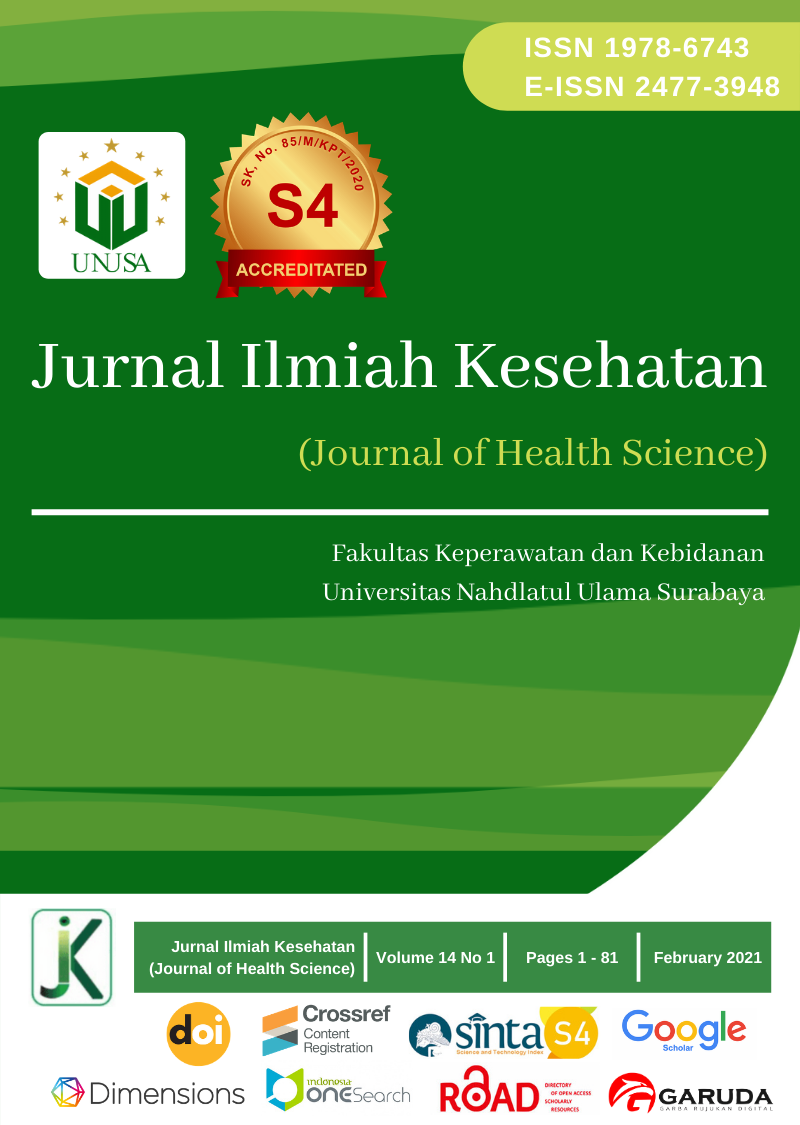Development Of Stunted Toddlers Aged 24-59 Months Using Prescreening Developmental Questionnaire (Pdq) In Air Dingin Public Health Center, Padang 2019: An Overview
Main Article Content
Abstract
Background: Stunting is a chronic malnutrition problem that resulted from an insufficient nutritional intake for a long time. This problem can develop during pregnancy, infancy, childhood, and throughout the life cycle due to feeding that does not accommodate the nutritional needs. Stunting correlates with disorders of fine motor, gross motor, language, and personal social skills. Objective: This study aims to perceive an overview of stunted toddlers aged 24-59 months using the Prescreening Developmental Questionnaire (PDQ). Method: The authors carried out this research in Air Dingin public health center, Padang, from April to September 2019. This research was descriptive that included 40 toddlers aged 24-59 months diagnosed with stunting. The data presentation was a frequency distribution table and percentage. Results: This study obtained that 22 toddlers (55.0%) were girls, seven toddlers (17.5%) experienced a developmental deviation, and 26 toddlers (65%) had suspected developmental deviation. In short, there were several cases of stunted toddlers who underwent a developmental deviation
Downloads
Article Details
Copyright (c) 1970 Dita Hasni, Febianne Eldrian

This work is licensed under a Creative Commons Attribution-ShareAlike 4.0 International License.
References
Arini, D., Mayasari, A. C. and Rustam, M. Z. A. (2019) ‘Gangguan Perkembangan Motorik Dan Kognitif pada Anak Toodler yang Mengalami Stunting di Wilayah Pesisir Surabaya’, Journal of Health Science and Prevention, 3(2), pp. 122–128. doi: 10.29080/jhsp.v3i2.231.
Casale, D., Desmond, C. and Richter, L. (2014) 'The association between stunting and psychosocial development among preschool children: A study using the South African Birth to Twenty cohort data', Child: Care, Health and Development. doi: 10.1111/cch.12143.
Crookston, B. T. et al. (2011) 'Impact of early and concurrent stunting on cognition', Maternal and Child Nutrition. doi: 10.1111/j.1740-8709.2010.00255.x.
Danaei, G. et al. (2016) 'Risk Factors for Childhood Stunting in 137 Developing Countries: A Comparative Risk Assessment Analysis at Global, Regional, and Country Levels', PLoS Medicine. doi: 10.1371/journal.pmed.1002164.
Dhamayanti, M. (2016) ‘Kuesioner Praskrining Perkembangan (KPSP) Anak’, Sari Pediatri, 8(1), p. 9. doi: 10.14238/sp8.1.2006.9-15.
Dinkes Padang Catat 3.269 Anak Kerdil, Balita Stunting PR Bersama (2018) Harian Haluan. Available at: https://www.harianhaluan.com/news/detail/72165/dinkes-padang-catat-3269-anak-kerdil-balita-stunting-pr-bersama.
Gunawan, G., Fadlyana, E. and Rusmil, K. (2016) ‘Hubungan Status Gizi dan Perkembangan Anak Usia 1 - 2 Tahun’, Sari Pediatri. doi: 10.14238/sp13.2.2011.142-6.
Hafid, F. and Nasrul, N. (2016) ‘Faktor Risiko Stunting Pada Anak Usia 6-23 Bulan di Kabupaten Jeneponto (Risk Factors of Stunting among Children Aged 6-23 Months in Jeneponto Regency)’, Indonesian Journal of Human Nutrition. doi: 10.21776/ub.ijhn.2016.003.suplemen.5.
Hanani, R. and Syauqi, A. (2016) ‘Perbedaan Perkembangan Motorik Kasar, Motorik Halus, Bahasa, Dan Personal Sosial Pada Anak Stunting Dan Non Stunting’, Journal of Nutrition College, 5(4), pp. 412–418. doi: 10.14710/jnc.v5i4.16452.
Hartanto, F. et al. (2016) ‘Pengaruh Perkembangan Bahasa Terhadap Perkembangan Kognitif Anak Usia 1-3 Tahun’, Sari Pediatri. doi: 10.14238/sp12.6.2011.386-90.
Husnah, H. (2017) ‘Nutrisi pada 1000 Hari Pertama Kehidupan’, Jurnal Kedokteran Syiah Kuala. doi: 10.24815/jks.v17i3.9065.
Kemenkes RI (2014) ‘Kualitas Manusia Ditentukan Pada 1000 Hari Pertama Kehidupannya’, Hari Aids Sedunia 2014. doi: 351.077 Ind r.
Kemenkes RI (2018) ‘Buku saku pemantauan status gizi’, Buku saku pemantauan status gizi tahun 2017, pp. 7–11.
Kementerian Kesehatan Republik Indonesia (2018) ‘Buletin Stunting’, Kementerian Kesehatan Republik Indonesia.
Nahar, B. et al. (2012) 'Effects of a community-based approach of food and psychosocial stimulation on growth and development of severely malnourished children in Bangladesh: A randomised trial', European Journal of Clinical Nutrition. doi: 10.1038/ejcn.2012.13.
De Onis, M. (2015) '4.1 The WHO child growth standards', World Review of Nutrition and Dietetics. Doi: 10.1159/000360352.
Pantaleon, M. G., Hadi, H. and Gamayanti, I. L. (2016) ‘Stunting berhubungan dengan perkembangan motorik anak di Kecamatan Sedayu, Bantul, Yogyakarta’, Jurnal Gizi dan Dietetik Indonesia (Indonesian Journal of Nutrition and Dietetics). doi: 10.21927/ijnd.2015.3(1).10-21.
Probosiwi, H., Huriyati, E. and Ismail, D. (2017) ‘Stunting dan perkembangan anak usia 12-60 bulan di Kalasan’, Berita Kedokteran Masyarakat, 33(11), p. 559. doi: 10.22146/bkm.26550.
RISKESDAS (2018) ‘Hasil Utama Riset Kesehatan Dasar 2018’, Kementrian Kesehatan Republik Indonesia.
Vazir, S. and Boindala, S. (2016) 'Nutrition, brain development and cognition in infants, young children and elderly,' in Proceedings of the Indian National Science Academy. Doi: 10.16943/ptinsa/2016/48882.
WHO (2016) The double burden of malnutrition: Policy Brief, WHO.





